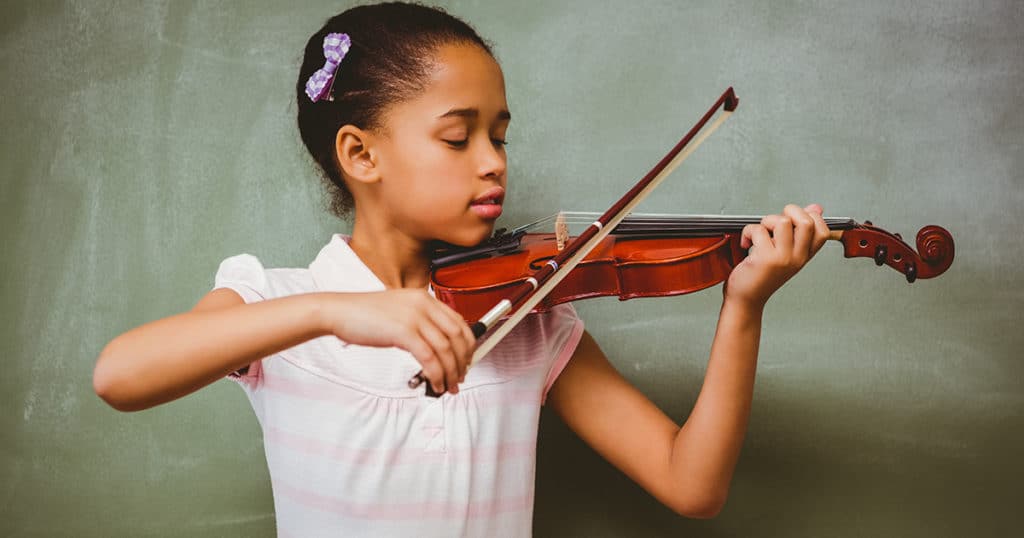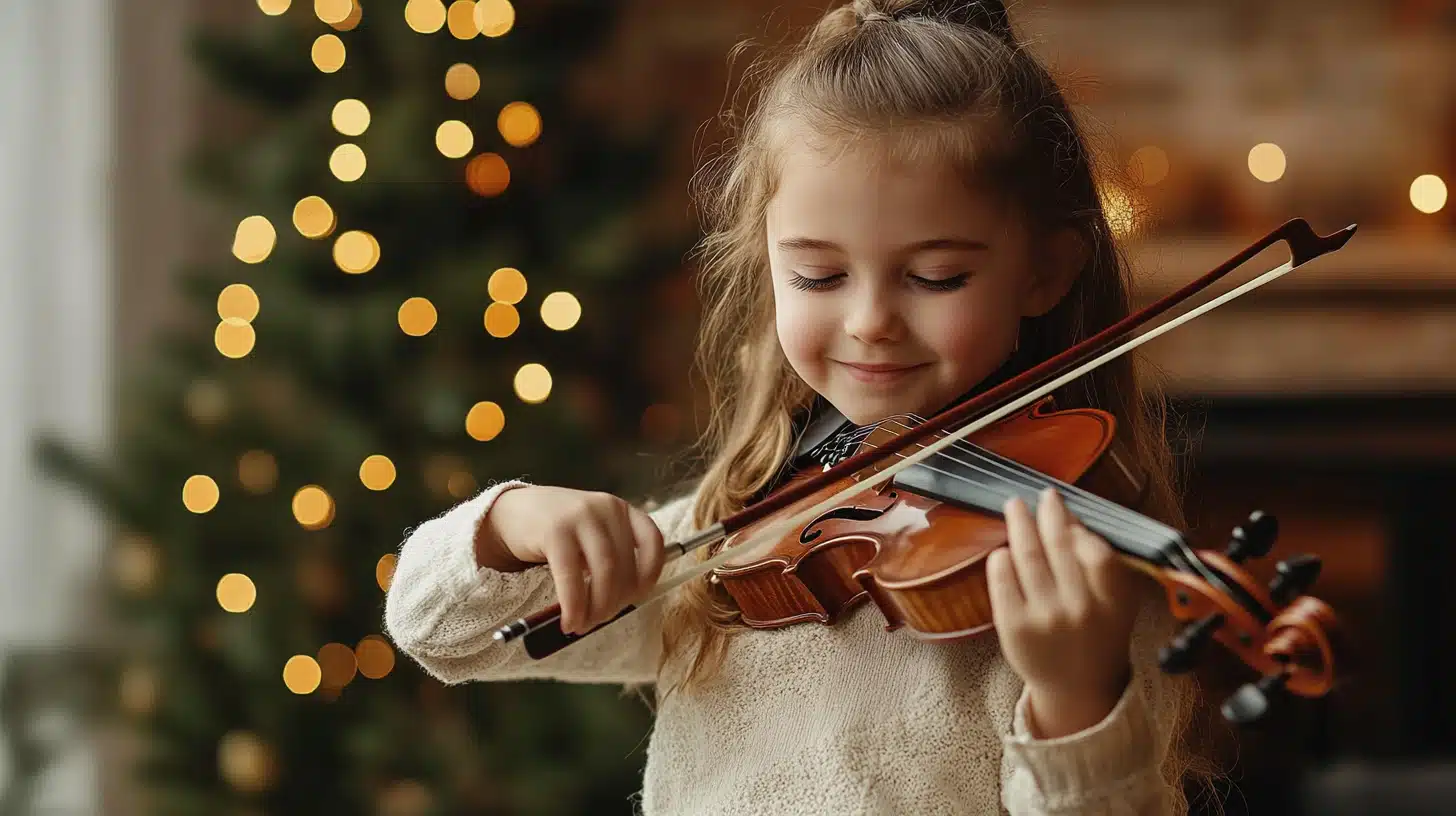If you have a lovely child and found their heart in violin, then it’s time to support them. The first thing you can do is to purchase their first instrument.
Believe me, they’ll be forever thankful for it and you’ll not regret buying them this instrument. However, how do you choose the right starter violin for your kids? Stick with this post and I’ll share some tips!
Understanding the Basics

Violin Sizes
The first thing you need to do is to learn that violins come in different sizes and you need to know which one suits your child. Here are the typical sizes.
- 1/16
- ⅛
- ¼
- ½
- ¾
- 4/4 or full-size
You can determine the right size for your kid by letting your child test each size. By doing so, you’ll see what particular size perfectly lies on your child’s chin together with the length.
Age and Skill Level
Another factor to consider is your kid’s age and skill level. If you have a younger beginner kid, they can benefit from a simpler instrument, which prioritizes playability. Then, as your kid progresses and their skills develop, you may consider upgrading to another instrument.
Quality and Construction
Material Considerations
When you evaluate violins, always keep an eye on the materials they have. There are good starter violins made from solid wood like maple and spruce, which can provide a better sound. Thoroughly, there are laminated wood options but trust me – they are just a waste of money.
Build Quality
When it comes to the build quality, look for a violin that has a well-constructed body with even seams and well-aligned parts. For example, the fingerboard, pegs, and chinrest should be made of either rosewood or ebony. Don’t settle for poorly built instruments as it will give you issues sooner.
Budget and Cost

Set a Budget
Beginner violins can vary greatly in price, from inexpensive factory-made models to more expensive, handcrafted instruments. As for me, I advise you not to settle with the cheapest violins and make sure to clearly define your budget. In fact, $100 and $300 are reasonable budgets for starters.
Additional Cost
Many violins come as part of a package that includes a bow, case, and rosin. All these are important in playing the violin so make sure to buy one with complete accessories. You’ll encounter some lower-priced packages but don’t buy them for their low-quality accessories.
Features to Look For
Setup and Accessories
A well-set-up violin will have the bridge properly aligned, the strings spaced evenly, and the fingerboard at the correct height. Many beginner violins come pre-set-up and accessories, but it’s still a good idea to have a professional luthier inspect and adjust the instrument if needed.
Playability
For a child learning the violin, ease of play is crucial. What makes a good violin, it should be easy to tune, with pegs that turn smoothly and stay in place. The strings should not be too high above the fingerboard, which can make pressing down on them difficult for small hands.
Conclusion
Choosing the right starter violin for kids involves considering factors such as size, material, and playability while staying within a reasonable budget.
By understanding what makes a good violin, you can select an instrument that encourages your child’s musical development and fosters a lifelong love for music. Remember to invest in quality and ensure the violin is properly set up to give your child the best possible start on their musical journey.

